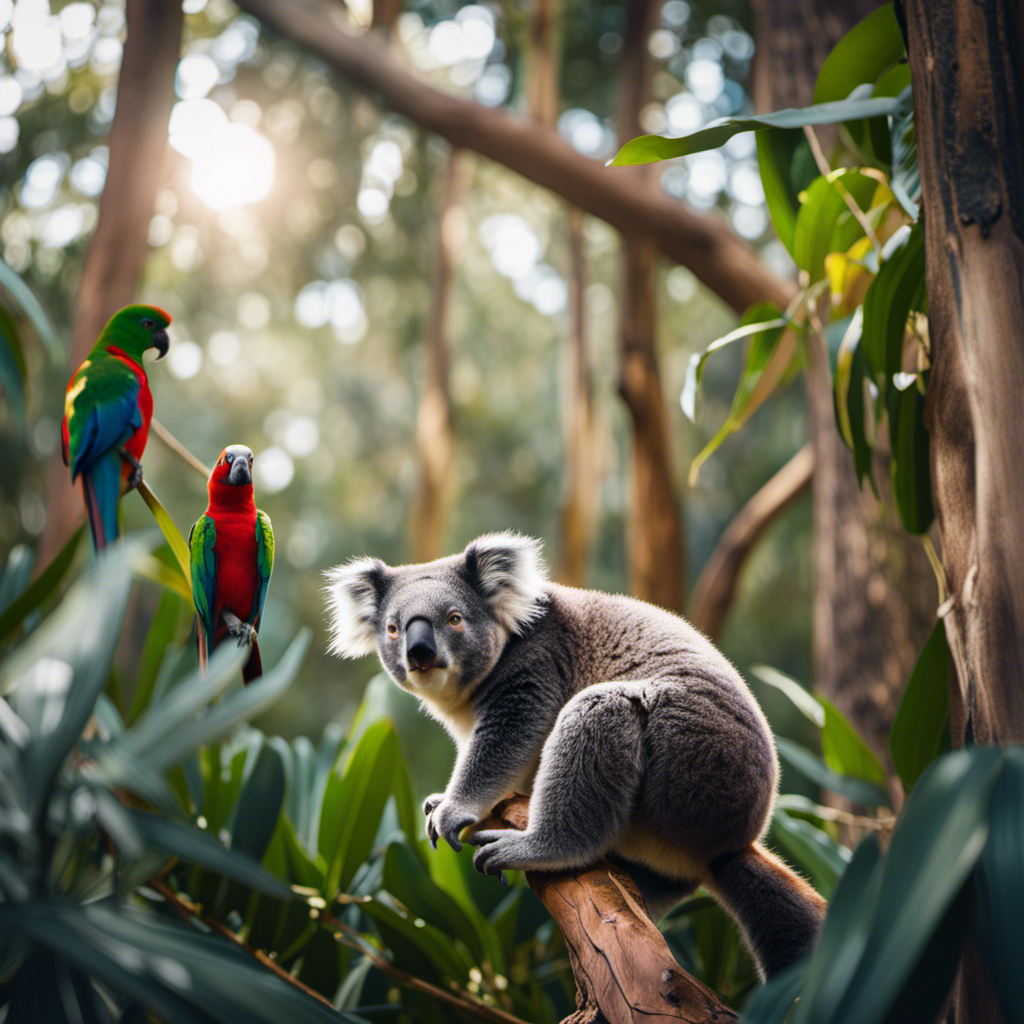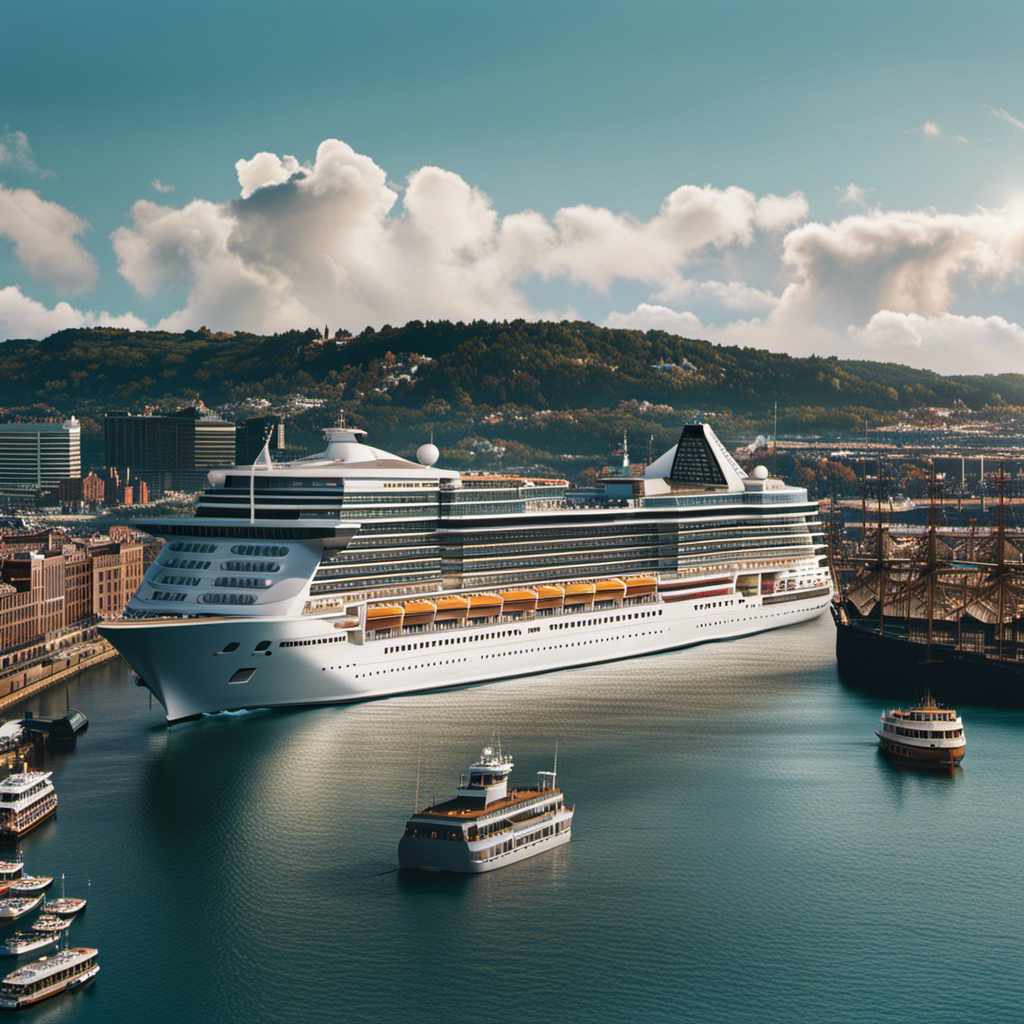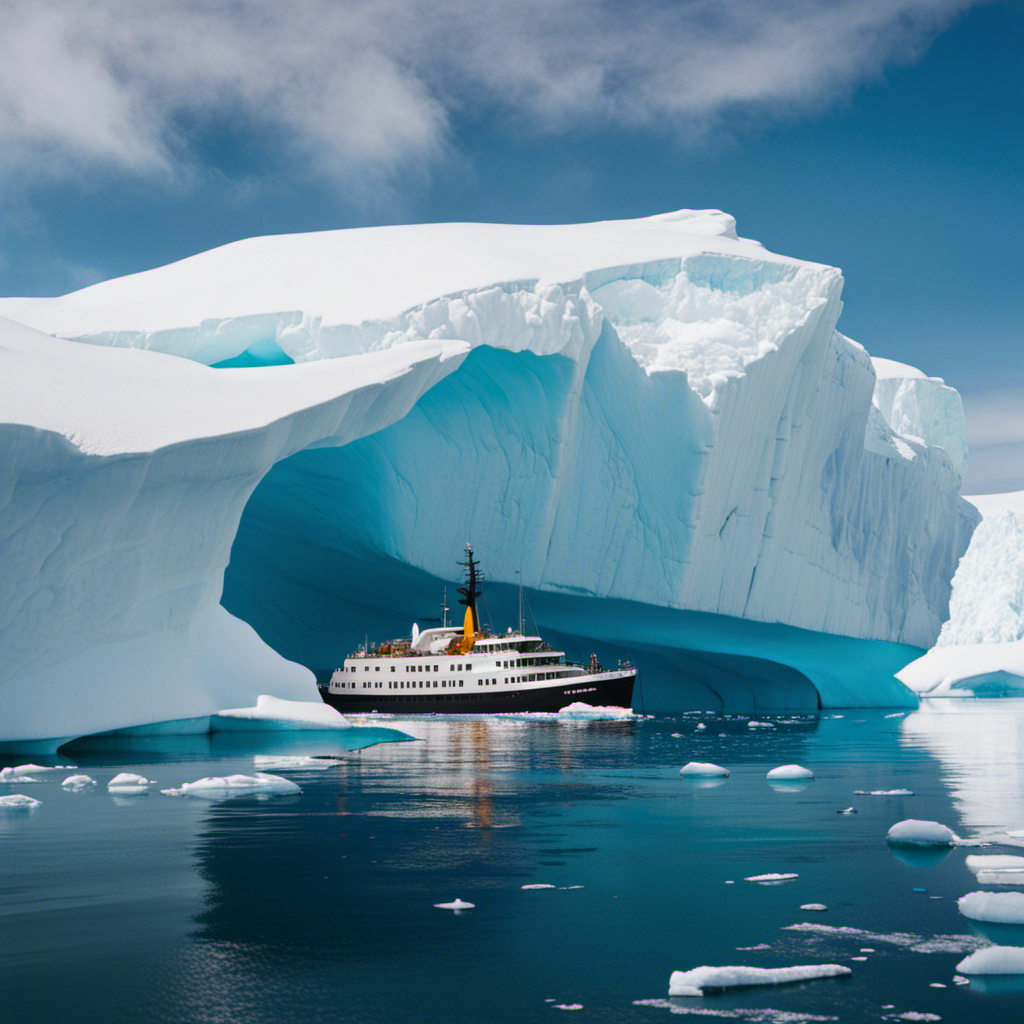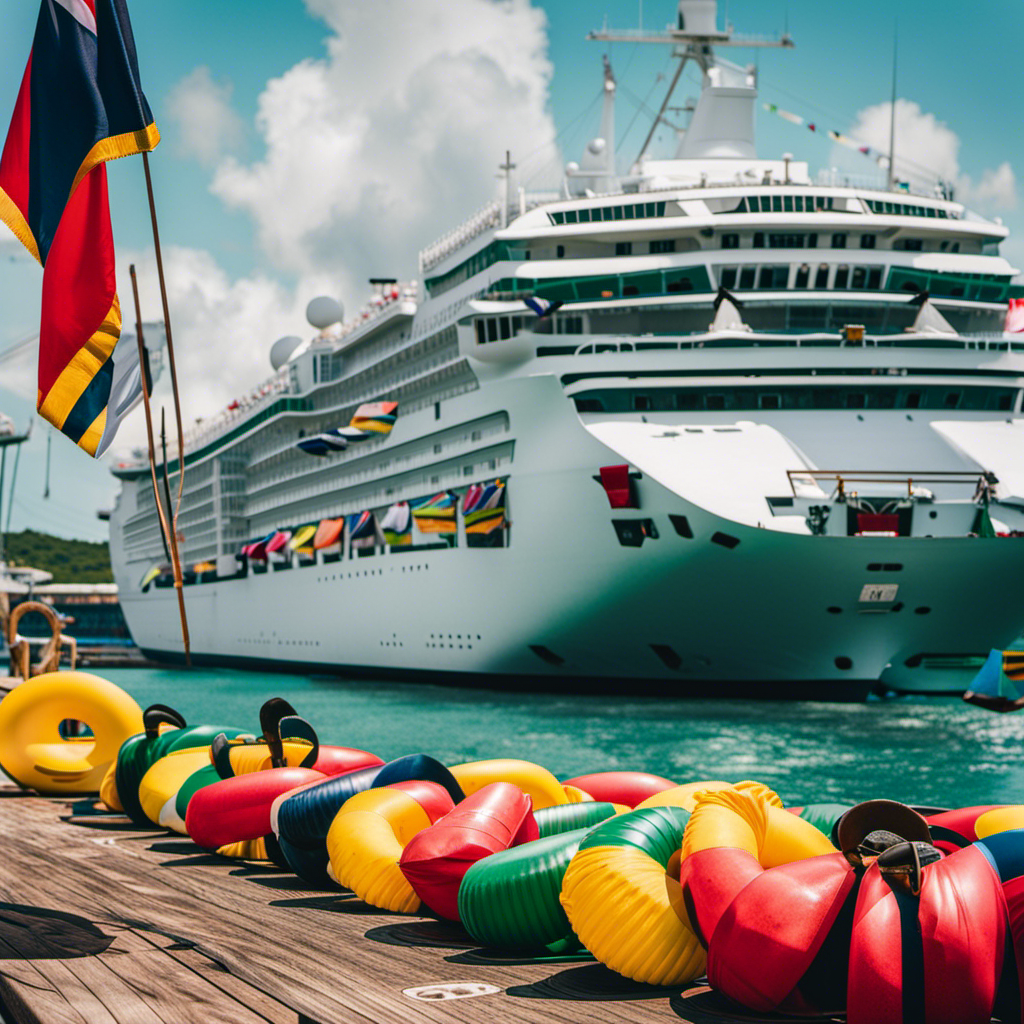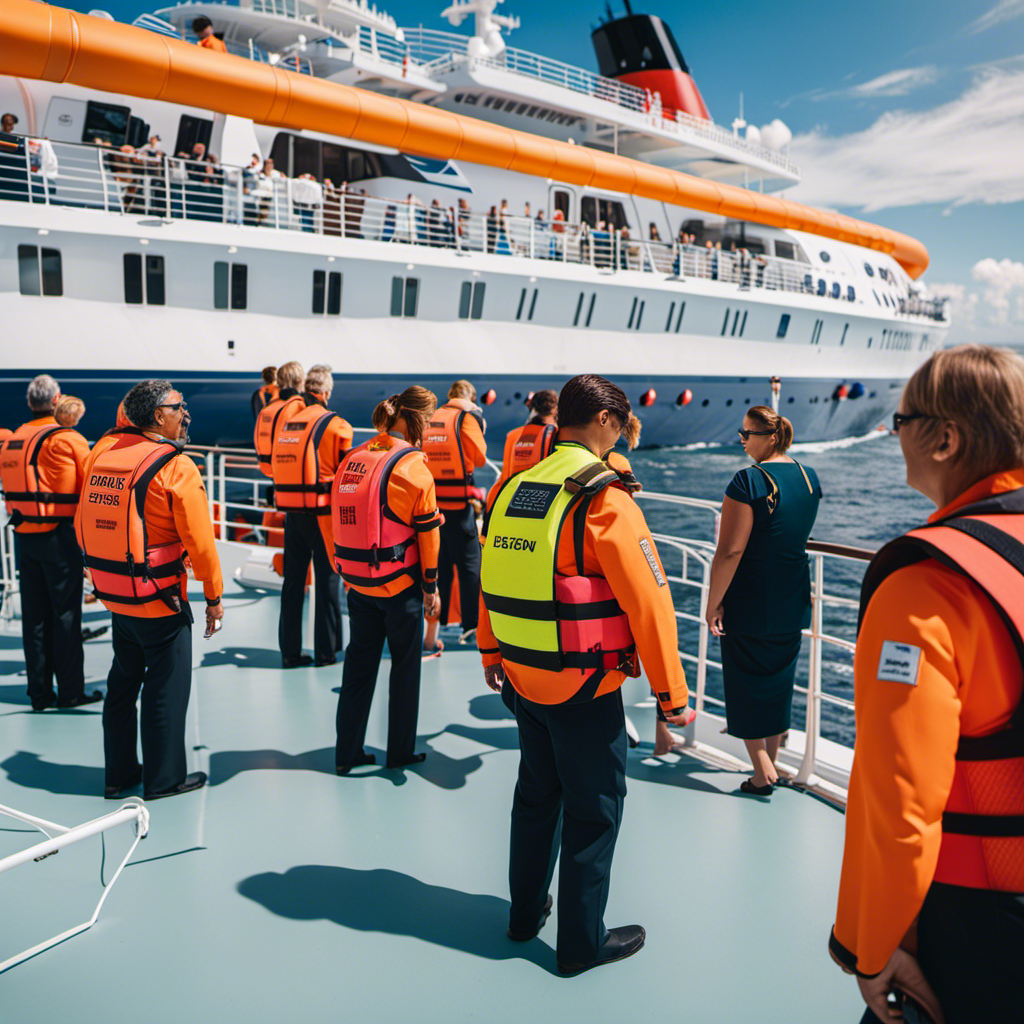As I stepped into the sanctuary, a world of wonder unfolded before me. My pulse raced with excitement, preparing me for unforgettable encounters with the enthralling wildlife of Australia.
From cuddling koalas to observing native dingoes, feeding enormous crocodiles to petting adorable wombats, the possibilities seemed endless.
The reptile experience promised close encounters with snakes, lizards, and baby crocs, while the free-flight bird show showcased the grace of birds in flight.
With opportunities to feed turtles, interact with kangaroos, and photograph rare cassowaries, this sanctuary offers a truly remarkable wildlife experience.
Key Takeaways
- Koalas can be surprisingly heavy and cling onto you like a tree.
- Dingoes are native animals in Australia and an important part of Australian fauna.
- Crocodile feeding at the sanctuary is an unbelievable sight and visitors can capture the moment with their cameras.
- Wombats are the largest burrowing mammals in the world and visitors can learn about them and pet them at the sanctuary.
Koala Experience
I can hold koalas legally in Queensland, South Australia, and Western Australia, but it’s illegal in New South Wales.
Koalas are iconic Australian animals known for their cuddly appearance and love for eucalyptus leaves. Despite their popularity, koalas face conservation challenges due to habitat loss and disease. Efforts are being made to protect and conserve their populations.
In popular culture, koalas are often depicted as cute and adorable creatures, making appearances in children’s books, movies, and stuffed animals. They have become symbols of Australia and are beloved by people around the world.
Interacting with koalas can be a memorable experience, allowing visitors to learn more about these unique marsupials and support their conservation.
Dingo Experience
At the sanctuary, visitors can learn about dingoes and their history in Australia. Dingoes are native animals in Australia and have been present on the continent for around 18,000 years. They are considered an important part of Australian fauna.
At the sanctuary, you can observe and learn about dingo behavior. Dingoes are known for their independent and intelligent nature. They have adapted well to a variety of habitats, including deserts, grasslands, and forests. Dingoes are skilled hunters and have a diverse diet, including small mammals, birds, and even insects.
Unfortunately, dingo conservation is a concern due to threats such as habitat loss and hybridization with domestic dogs. Sanctuaries like this one play a crucial role in educating the public about dingoes and promoting their conservation.
Crocodile Feeding
Witnessing the crocodile feeding at the sanctuary is truly an exhilarating experience. The crocodiles are massive creatures that command attention as they glide through the water.
Here are five fascinating facts about crocodile behavior and crocodile conservation efforts:
- Crocodiles have a powerful bite force that can crush bones.
- They are skilled hunters and can wait patiently for hours before ambushing their prey.
- Crocodile conservation efforts focus on protecting their natural habitats and raising awareness about their importance in the ecosystem.
- Sanctuaries play a crucial role in educating the public about crocodile behavior and conservation.
- By observing crocodile feeding, visitors can gain a deeper understanding of these remarkable creatures and the need to protect them.
So come and witness the incredible power and grace of crocodiles as they feed, and learn how you can contribute to their conservation.
Wombat Experience
Feeding and petting wombats at the sanctuary is an experience that shouldn’t be missed. Interacting with wombats is both fun and educational. These adorable creatures are the largest burrowing mammals in the world and may resemble overgrown mice. Visitors can learn about wombats and even have the opportunity to pet them. It’s a unique and interesting way to get up close and personal with Australia’s wildlife. To give you a deeper understanding of wombats, here’s a table with some fascinating facts:
| Wombat Facts | |
|---|---|
| Diet | Herbivorous |
| Habitat | Forests and grasslands |
| Lifespan | 15-20 years |
| Size | Up to 40 inches long |
| Conservation status | Least Concern |
Petting wombats is not only an adorable experience but also a chance to appreciate the diversity and beauty of Australia’s fauna. So don’t miss out on this incredible opportunity at the sanctuary!
Reptile Experience
Interacting with the reptiles at the sanctuary allows me to learn about and appreciate the diverse species of snakes, lizards, and baby crocs. It’s fascinating to observe these creatures up close and learn about their behavior.
The sanctuary plays a crucial role in reptile conservation, providing a safe environment for these animals and educating visitors about their importance in the ecosystem. By interacting with them, I can witness firsthand how they move, hunt, and interact with their surroundings.
It’s incredible to see the agility and strength of snakes, the unique scales and patterns of lizards, and the adorable nature of baby crocs. Through these experiences, I gain a deeper understanding of reptile behavior and the need to protect these incredible creatures for future generations.
Free-Flight Bird Show
Attending the free-flight bird show at the sanctuary, I am amazed by the graceful movements and vibrant colors of the birds in flight.
- The birds soar through the sky with effortless grace, their wings outstretched and feathers glistening in the sunlight.
- They perform intricate aerial maneuvers, diving and swooping with precision and agility.
- Their melodic calls fill the air, creating a symphony of nature’s music.
- I observe their social behavior, as they interact with each other, displaying courtship rituals and establishing hierarchies.
- It is evident that these birds are well cared for, as the sanctuary’s conservation efforts aim to protect and preserve their natural habitats.
The free-flight bird show not only showcases the beauty and behavior of these magnificent creatures but also raises awareness about the importance of bird conservation efforts. By observing these birds in their natural element, we can better understand and appreciate their role in the ecosystem.
It is a truly unforgettable experience that highlights the need to protect and conserve bird species for future generations.
Turtle Feeding and Races
After enjoying the captivating Free-Flight Bird Show, I couldn’t wait to participate in the next exciting activity at the sanctuary: Turtle Feeding and Races. This fun-filled event allows visitors to get up close and personal with these fascinating reptiles.
At the sanctuary, there is a designated area where visitors can feed the Kreffts turtles. It’s truly a delight to watch as they eagerly swim towards the food and enjoy their meal. But the excitement doesn’t stop there! The sanctuary also hosts a turtle derby, where visitors can cheer on their favorite turtle as it races against others. The winning turtle even receives an extra chunk of fish skin as a prize!
Observing the unique behaviors of turtles during feeding and races is both entertaining and educational. These creatures exhibit incredible swimming skills and demonstrate their determination as they compete for the finish line. It’s an unforgettable experience that showcases the beauty and agility of these amazing creatures.
Kangaroo Feeding
As I approached the kangaroo feeding area, I couldn’t help but feel excited to get up close and personal with these gentle creatures. Kangaroos are iconic symbols of Australia and interacting with them is a truly unforgettable experience.
To ensure the best kangaroo feeding techniques, here are some tips to keep in mind:
- Approach the kangaroos slowly and calmly, respecting their personal space.
- Offer kangaroo food in an open hand, allowing them to gently take it from you.
- Avoid making sudden movements or loud noises that may startle the kangaroos.
- Observe the kangaroos’ body language; if they show signs of discomfort, give them space.
- Remember that kangaroo conservation efforts are important, so it’s crucial to follow any guidelines set by the sanctuary or park to protect these magnificent animals.
Cassowary Feeding
Feeding the cassowaries at the sanctuary is an incredible experience. These magnificent birds are one of the largest species in the world, and getting to interact with them is truly special.
Interacting with cassowaries is a rare and magnificent experience that not many people have the opportunity to have. These birds are known for their striking appearance, with their vibrant colors and tall, helmet-like casques on their heads.
It is important to note that cassowaries are an endangered species, with less than 1,000 left in the world. This highlights the importance of conservation efforts to protect and preserve these unique birds and their habitats.
Unforgettable Wildlife Encounters
I was amazed by the incredible diversity of animals I encountered at the sanctuary. From adorable koalas to majestic dingoes, there was something for everyone. Interacting with these Australian marsupials was a truly unforgettable experience.
Here are four reasons why conserving native Australian animals is so important:
-
Biodiversity: Australia is home to a unique range of wildlife found nowhere else in the world. By conserving these animals, we preserve the rich biodiversity of the continent.
-
Ecosystem Balance: Native animals play vital roles in maintaining the balance of their ecosystems. For example, kangaroos help control vegetation growth, while wombats create burrows that provide shelter for other species.
-
Cultural Significance: Australian animals hold deep cultural significance to Indigenous communities. By conserving these creatures, we honor and respect their heritage.
-
Future Generations: Protecting native Australian animals ensures that future generations will be able to witness and learn from these incredible creatures. It is our responsibility to safeguard their habitats and ensure their survival for years to come.
Frequently Asked Questions
Are There Any Restrictions on Holding Koalas in Australia?
Yes, there are restrictions on holding koalas in Australia. It is legal in Queensland, South Australia, and Western Australia, but illegal in New South Wales. These restrictions aim to protect koala conservation efforts and preserve their natural habitat.
How Long Do Dingoes Typically Live in Captivity?
Dingoes typically live around 10-15 years in captivity. In efforts to conserve the species, sanctuaries educate visitors about dingo behavior and their importance in Australia’s fauna. Conservation efforts aim to protect the dingo population.
What Is the Average Size of a Saltwater Crocodile?
The average size of a saltwater crocodile is huge, reaching up to 17 feet in length. These impressive creatures prefer to inhabit coastal areas and estuaries, making them a formidable presence in Australia’s wildlife.
Can Wombats Be Kept as Pets?
No, wombats cannot be kept as pets. They are wild animals that have specialized behaviors and diets. Wombats are herbivores and mainly eat grasses, roots, and bark. It’s important to respect their natural habitat and leave them in the wild.
How Many Species of Reptiles Can Be Found at the Sanctuary?
At the sanctuary, there are numerous reptile species to observe. These fascinating creatures play an important role in Australia’s fauna. Sanctuaries like this one contribute to conservation efforts, protecting the diverse wildlife of the country.
Conclusion
In conclusion, my experience at the wildlife sanctuary in Australia was truly unforgettable.
From holding and learning about koalas in the Koala Experience to observing native dingoes in the Dingo Experience, every encounter was fascinating.
The sight of a huge saltwater crocodile catching a chicken during the Crocodile Feeding was absolutely incredible.
Petting and learning about wombats in the Wombat Experience was a unique experience.
The Reptile Experience allowed me to observe snakes, lizards, and baby crocs up close.
Participating in Turtle feeding and races, interacting with kangaroos, and feeding and photographing cassowaries added to the adventure.
Overall, this sanctuary provided me with an unforgettable opportunity to connect with Australia’s incredible wildlife, leaving me with memories that will last a lifetime.
It was like stepping into a magical world where nature’s wonders came alive before my eyes.

